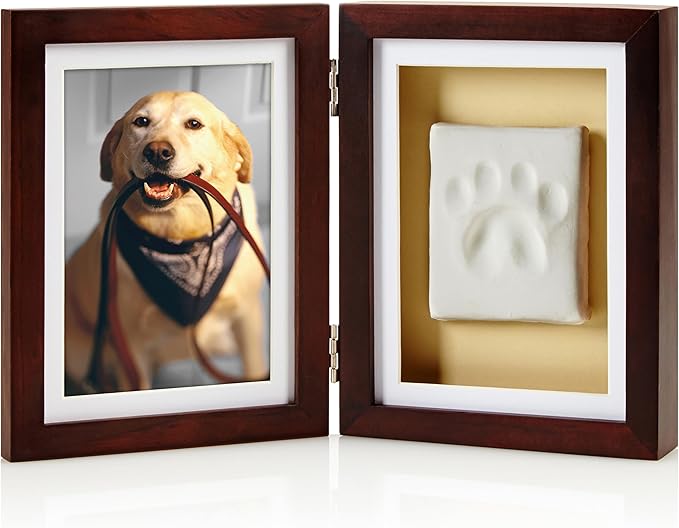
Ways to Reduce Your Pet’s Carbon Pawprint
As pet owners, we all want to provide the best care for our furry friends. But have you ever thought about the environmental impact of your pet’s lifestyle? Just like humans, pets contribute to carbon emissions through their food, waste, products, and activities. Reducing your pet’s carbon pawprint is not only good for the planet but can also improve their health and well-being. Here are 10 practical ways to make a positive difference for your pet and the environment.
1. Choose Sustainable and Eco-Friendly Pet Food
Pet food production is a significant contributor to greenhouse gas emissions, especially meat-based diets. To reduce your pet’s carbon pawprint, consider switching to sustainable pet food options. Look for brands that use responsibly sourced ingredients, such as wild-caught fish, free-range poultry, or plant-based proteins. Some companies also use insect protein or lab-grown meat, which have a much lower environmental impact.
You can also try homemade meals using organic vegetables and grains combined with smaller portions of ethically sourced meat. Be sure to consult your veterinarian to ensure your pet’s nutritional needs are met.
2. Reduce Overfeeding and Food Waste
Overfeeding pets leads to unnecessary food waste and excess production emissions. Measure your pet’s portions carefully and avoid giving too many treats. Store pet food properly to prevent spoilage and discard expired products responsibly. By feeding your pet the right amount, you reduce waste and help maintain their healthy weight.
3. Use Eco-Friendly Pet Products
Many pet products, including toys, bedding, and grooming supplies, are made from non-biodegradable plastics and synthetic materials. Opt for products made from natural, recycled, or biodegradable materials. For example, choose toys made from organic cotton, hemp, or recycled rubber. Look for eco-friendly grooming shampoos without harsh chemicals that can harm waterways.
Additionally, avoid single-use products like disposable poop bags and consider compostable or biodegradable alternatives instead.
4. Minimize Plastic Waste
Plastic pollution is a major environmental issue that affects wildlife and ecosystems. Reduce your pet’s plastic waste by choosing reusable food and water bowls, collars, and leashes made from sustainable materials. Avoid plastic packaging by buying pet food in bulk or from stores that allow you to refill containers.
When you do need to use plastic, be sure to recycle it properly and support brands that use recycled plastics in their products.
5. Manage Pet Waste Responsibly
Pet waste can be a source of environmental contamination if not handled properly. Always pick up after your pet during walks, but instead of using conventional plastic bags, switch to biodegradable or compostable poop bags. Some communities offer pet waste composting programs that convert waste into safe fertilizer.
Never flush pet waste down the toilet, as it can introduce harmful pathogens into water systems. Proper disposal helps protect local waterways and reduces pollution.

6. Conserve Water During Pet Care
Bathing and cleaning up after pets can use a surprising amount of water. Save water by bathing your pet less frequently unless necessary, and use a bucket instead of running water continuously. Choose water-efficient grooming tools and fix leaks promptly. Conserve Water During Pet Care
For outdoor pets, provide fresh water in a shaded bowl to reduce evaporation and refill only when needed. Oxyfresh Premium Pet Dental Care Solution Pet Water Additive: Best Way to Eliminate Bad Dog Breath and Cat Bad Breath – Fights Tartar & Plaque – So Easy, Just Add to Water! Vet
7. Support Local and Organic Pet Supplies
Buying locally produced pet supplies reduces the carbon emissions associated with transportation. Look for local pet food manufacturers, groomers, and stores that prioritize sustainability. Organic pet foods and treats use ingredients grown without synthetic pesticides or fertilizers, which benefits soil health and biodiversity.
Supporting local businesses also strengthens your community and encourages more sustainable practices.
8. Embrace Adoption and Responsible Breeding
Adopting pets from shelters or rescues reduces the demand for breeding operations that can have larger environmental footprints. Responsible breeding practices prioritize the health and well-being of animals while minimizing overpopulation and the need for excess resources.
If you’re considering adding a pet to your family, adoption is a sustainable choice that saves lives and reduces environmental strain.
9. Encourage Eco-Friendly Pet Activities
Some pet activities have a larger carbon impact than others. Instead of driving long distances to pet parks or events, try local walks or hikes that don’t require a car trip. Use human-powered transportation like biking or walking when possible.
For cats, provide indoor enrichment with toys and climbing structures to reduce the need for outdoor roaming, which can impact local wildlife.
10. Spread Awareness and Advocate for Change
Finally, share your knowledge about reducing pet carbon pawprints with other pet owners, friends, and community members. Advocate for environmentally responsible pet policies in your community, such as waste composting programs and support for sustainable pet businesses.
By raising awareness and encouraging others to make eco-friendly choices, you contribute to a larger movement toward sustainability in pet care.
Conclusion
Reducing your pet’s carbon pawprint is a meaningful way to contribute to environmental conservation while enhancing your pet’s health and happiness. From choosing sustainable food and products to managing waste responsibly and supporting local businesses, every small step counts. Implementing these 10 strategies not only benefits the planet but also helps create a cleaner, healthier world for current and future generations of pets and people alike.
Start today by evaluating your pet care routine and making one or two eco-friendly changes. Over time, these actions will add up to a significant positive impact. Together, we can ensure that our love for animals goes hand in hand with our commitment to protecting the Earth.
